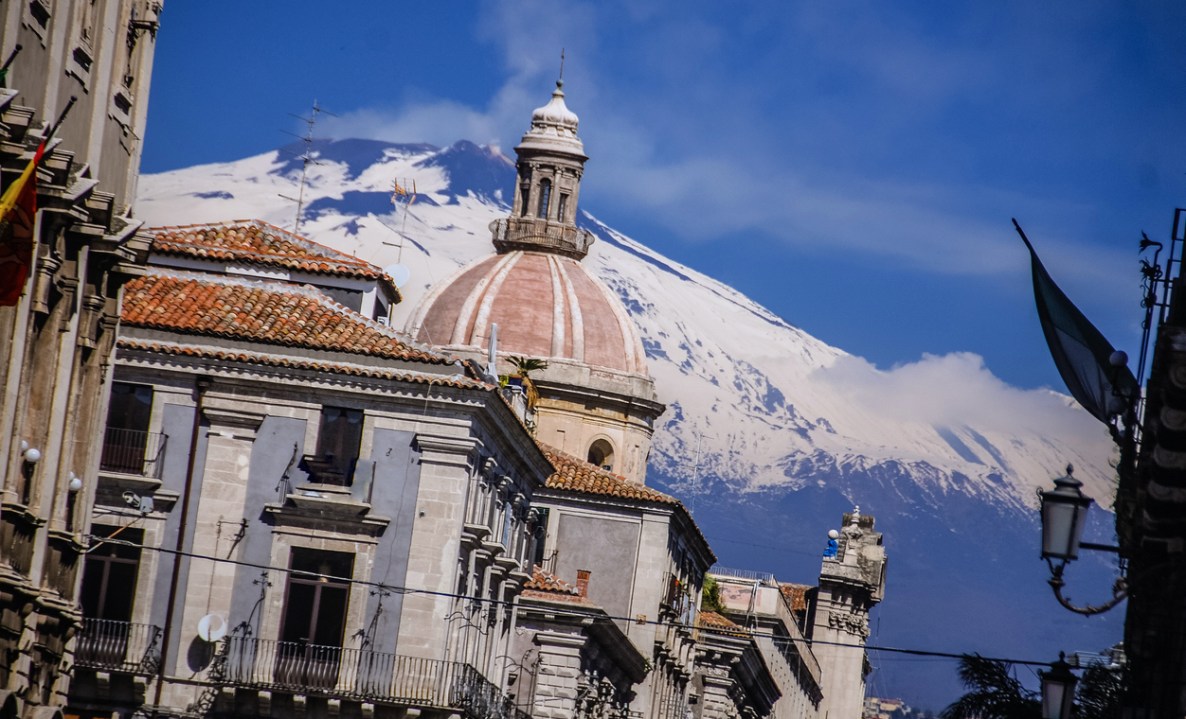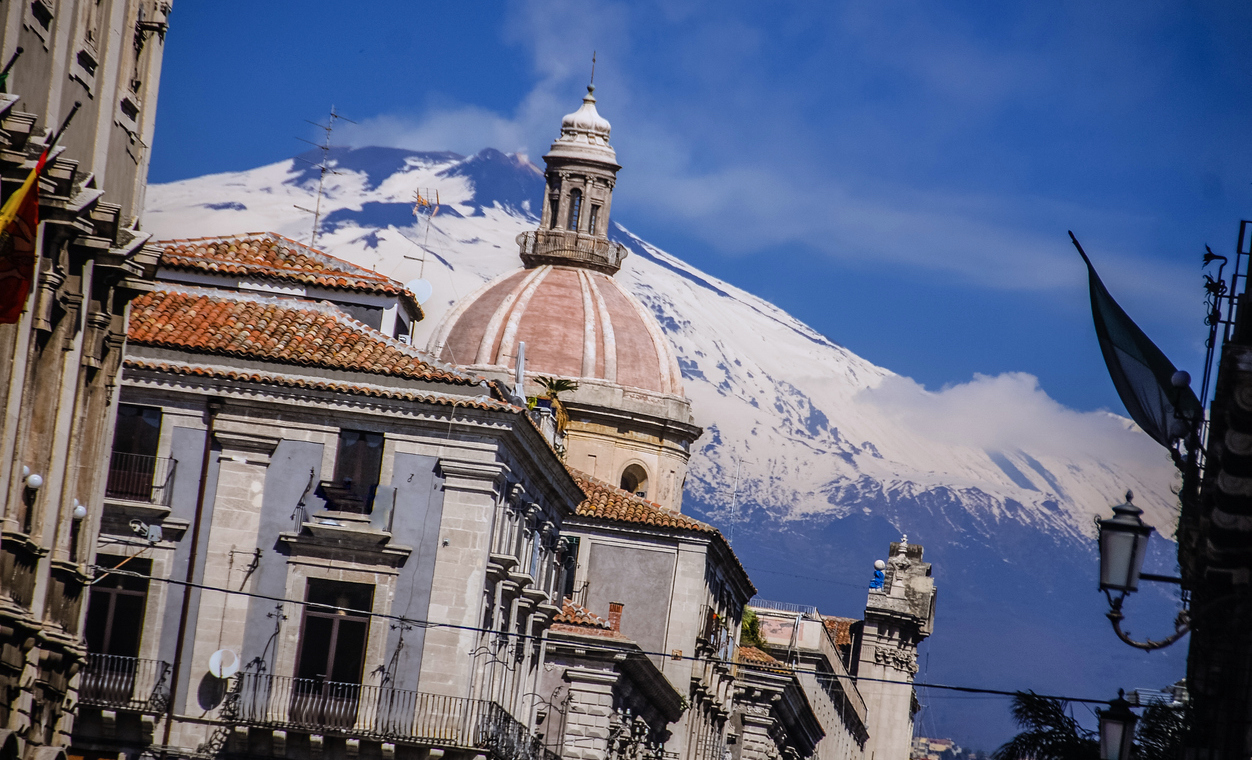Even in the long-shadowed depths of winter, Sicily can be a seductive place. From the hushed, hidden and time-polished marble piazzas of intricately lovely Ortygia, to the White Lotus out-of-season treats of ‘so pretty it hurts’ (Ernest Hemingway) Taormina, this blessed island has for obvious reasons been attracting invaders and colonisers for thousands of years. Indeed, enigmatic remains at Cozzo Matrice, near the lake of Pergusa – where Hades abducted the goddess Persephone – suggest Sicily might boast some of the oldest built human settlements on the planet.
Litter is a primary sign of a society in dangerous civic decline
Such is the longevity of human civilisation on Sicily, it is an amusing game to speculate when, within those long centuries, it might have peaked: as in, achieved its most noble, humane and beauteous form. You could, for instance, easily go as far back as the Hellenic colonies. There are few sights in Europe that are simultaneously as handsome and exhilaratingly proud as the great Greek temples of Agrigento, glowing and golden in the slant January sun, arrayed with casual grandeur on their hilltops in the south of the island.
Maybe we could look at the Romans? The Unesco-listed site of Villa Romana del Casale, in the heart of Sicily, dates from the 4th century. This is supposedly a period of imperial decline, yet the casually lavish mosaics, the courtyards once jubilant with welcoming fountains, the bewilderingly complex private bathhouses, speak of a civilisation still able to throw up domestic habitations of a splendour mankind maybe has yet to equal. Though we must never forget that all this ran on a plentiful supply of slaves, fed into the system like the wooden logs burned for the central heating.
You could also a put a word in for the Normans, who conquered Sicily in 1060, and contrived a unique, marvellously syncretic culture, infused with the sorbet-sipping luxuries of the Islamic Orient, yet with the religious and architectural bone structure of confidently Christian, Germano-Celtic northern Europe. The jewel box Cappella Palatina in Palermo is generally seen as the exemplar here: adorned with Arabic stylings and Fatimid grace-notes, yet ruled unquestionably by a stern, red-haired, Viking-faced Christ Pantocrator. The Christ who governs all.
A list of Sicilian highpoints can’t pass by without a mention of the extraordinary baroque cities of the southeast: Modica, Noto, Scicli, Ragusa – all rebuilt after an earthquake in 1693. Encountering these cities today is like walking into a Hollywood stage-set of idealised Italianate urbanism. The palazzi glow ochre and scarlet in the dusk. The gelati are sensational, the beer is cold, the wine is fine, the coffee is stronger than crack, the fusilli in squid ink is delicious, the gonads of the sea urchins are orange and sweet, and in the deathly stillness of the afternoon you can practically hear the jasmine petals falling into the marble fountains with their fine classical statues.
But there’s the key. The deathly stillness. There is a darkness that grips Sicily, which says all that glory is in the past, and now there is only decline: and, worse, Sicily is merely the bellwether. What has afflicted Sicily is about to afflict the entire western world. Sicilian decline is our decline. Our future.
Let’s go over that list again. North east of Ortygia, for instance, is a tragic, shattered coastline of failed and failing industry, positively late Soviet in its dilapidations. Out-competed by China, out-competed by everywhere, it now mostly rots in the salty wind. The seagulls seem to enjoy it. No one else does, no one else goes there.
Meanwhile a few miles from Villa Romana del Casale is the frankly depressing, scruffy, rundown grey hilltop town of Piazza Armerina. This is a town so infested with Mafia crime – from drugs to corruption – they have a sign in the main square, declaring hopefully ‘Piazza Armerina: a city against all mafias’. That may or may not reassure locals, but to a new visitor it has the opposite effect, like driving into Rotherham and seeing a sign saying ‘Hooray. No gang rapes since November’ or parking up in the West Midlands and seeing ‘Fewest arrests for cannibalism in a decade! Welcome to Redditch’.
Worst of all, perhaps, is Agrigento. The ancient Greek city is incomparably lovely, but it is surrounded by incomparable ugliness – dismal concrete new-builds, stretches of pot-holed, can’t be-bothered road that go nowhere, or, if they do go somewhere they take you to benighted, chaotic, soul-sappingly hideous towns that could easily be less salubrious burbs in Tunisia or Egypt, but minus the religious faith and, definitely, minus the noisy kids. Because Sicily – especially the interior – doesn’t really do kids. Increasingly: pauperised, crime-ridden, deindustrialised, environmentally challenged, and evermore waterless Sicily doesn’t do people.
The island is, in places, depopulating at a rapid tempo, the fertility rate has collapsed, and what few newcomers there are tend to be illegal migrants off the boats from Pantelleria, wandering around selling poignant trinkets no one buys, or simply dragging their blankets as they shuffle from shuttered supermarket to abandoned church, wondering what happened to rich western Europe.
But worst of all – absurdly – is the graffiti and the litter. Especially the litter. For mile after mile around Agrigento, every yard of roadside is crusted with litter. Plastic bags, metal cans, fast food trash; rotting bricks, half burnt tyres, incoherent dust; baby strollers, old hairdryers, entire car engines: if the Sicilians can dump it by a road, they will do so. Sometimes it feels like they must drive for an hour to dump that old microwave somewhere new and as-yet unlittered.
It might seem trivial: litter. This is not the case. Not only does litter drive every sane person over 40 into a wild, bring-back-the-death-penalty rage, but that rage is justified. Because litter is a primary sign of a society in dangerous civic decline. Studies show that people only litter where there is already litter. If there is no litter, they find a bin. If there is litter everywhere then they think ‘fuck it, I’ll chuck it’. Litter depends on a psychosocial nihilism; a sense of decline that feeds off itself.
You probably see my point. Sicily is leading the way in multiple forms. Deindustrialisation? I’ve seen that elsewhere in the west, even Germany, maybe especially Germany. Environmental degradation and water issues are universal. Same goes for drugs, crime, mafias: though these are a particular bane of the USA, supposedly the leader of the western world. At the same time, demographic decay and a worrying absence of kids is hardly restricted to Sicily and illegal or troubling immigration is a massive problem throughout the west: from Texas to LA to New York, from the beaches of Greece to the banlieues of Paris to the bombed-out apartments of Malmo.
What, then, about the litter issue? Sadly, this reminds me most of home. Of the UK. Of our struggling towns and uglified neighbourhoods. These days, when I look at photos of old urban Britain – 1880s or 1920s – I no longer marvel at all the hats, or the quaintness of horse-drawn buses, I think: where is the litter? How come the streets back then are so clean? When did we cease to care about our own cities that we foul them as we do? Litter and graffiti are the epidermal symptoms of a deeper, dangerous, internal disease. And Britain, like the rest of the West, but with its own specialities, has a serious case.
I have yet to mention one of the oldest sights in Sicily. It is not so easy to find. You have to drive along the coast from Palermo to a cliffside pine forest to reach the half-forgotten caves of Addaura. Here you will discover one of the world’s most disturbing examples of cave art. It seems to show deformed and tortured children, fighting to a sacrificial death, surrounded by cheering adults in animal masks. It is a mystery to experts. It is purely Satanic. And I wonder if it is a warning: showing what happens when there is finally no civilisation at all.







Comments